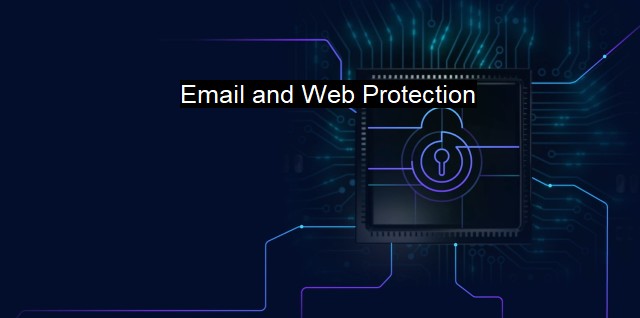What is Email and Web Protection?
Effective Email and Web Protection: Safeguarding Confidential Digital Systems with Cybersecurity Measures
Email and web protection encompass a wide variety of safeguards and mechanisms that are designed to secure entities operating in the digital world, including individual users, organizations, enterprises, and systems. As the internet landscape evolves continually, cyber threats keep emerging over the horizon, proving more advanced with each passing day. This situation necessitates the need for diligent deployment of comprehensive email and web protection systems as part of the broader cybersecurity mission.In its most fundamental sense, email phishing remains one of the most common modes of cyber-attacks initiated by threat actors. These could range from identified hackers seeking personal gain, to more loose-knit, stealth organizations performing corporate espionage or state-sponsored hacks. Typically, these ploys involve sending forged emails to the unwitting victims, camouflaging these as trusted or friendlier sources thereby tricking them into revealing sensitive data like usernames, passwords, and credit card details.
Therefore, email protection emerges as a crucial part of the cybersecurity strategy of any entity. Implementation of email protection measures includes integrated protections like spam filters, phishing and spoofing detectors, malware scanners, and controls against data loss. There are also more refined modes of email protection like sandboxing, wherein suspicious emails are isolated and run in a controlled virtual environment, thereby rendering their potentially malicious elements harmless. Besides, email encryption could also be considered another level of protection for safeguarding sensitive content of the emails while they are in transit.
Conversely, web protection has the colossal task of securing internet browsing activities from the multitude of threats lurking in the digital expanse of the internet. Web protection systems operate by several mechanisms, including, but not restricted to, deployment of firewalls, active network scanning, threat intelligence application, intrusion detection systems, and blocking suspected malware or ransomware coded websites from loading.
The slanderous software and ransomware impose a lasting negative impact on the targeted systems, capable of stirring a broad range of predicaments ranging from corrupting system files to denying owners' access to their files and even stealing sensitive personal or organizational data. So, implementing an effective antivirus solution plays a pioneering role in providing proactive web protection services to prevent these threats.
An antivirus solution works by continually scanning and monitoring the health of the system or the network it is employed to shield. This entire process could suppress harmful virus codes from propagating and spreading across the network, block the execution of malware, isolate suspicious files and programs from the rest of the system, regularly update the viruses and malware repository to fine-tune its capacity to filter out threats, and react effectively and promptly in threat neutralization.
The implementation combined with diligent application of email and web protection services shoots up the overall defense mechanism of systems or networks by multiple degrees. It saves substantial fiscal and non-fiscal losses for businesses and entities, maintains system integrity, and upholds user trust.
In the thriving digital era, it is prudent to advance along the technological progressions, armed with efficient antivirus solutions, that present robust email and web protection services as indispensable tools in strengthening the cybersecurity apparatus. We ought not to be restricting these protective services to merely tech or data-focused entities, but to perceive their necessity in day-to-day internet activities that encompass social media, online shopping, web surfing, emailing, etc.
In a world so profoundly interconnected, where cyber threats frequently evolve and adapt stealthily, email and web protection are more than cybersecurity terminologies; they represent the battle shields for digital entities battling in a dynamic and perilous cyber landscape. Even as deploying these measures might not provide an absolute guarantee of zero cyber threats, they significantly cut down the risks associated with cyber threats, which reinforces their usefulness and propels them into becoming rudimentary safety principles in this vast digital scape.

Email and Web Protection FAQs
What is email protection?
Email protection is a security feature that helps prevent unauthorized access to an email account or the sensitive information contained within it. It also protects against email-borne threats such as phishing attacks, viruses, and spam messages.What is web protection?
Web protection is a security feature that helps protect against web-based threats such as malware, phishing sites, and other malicious content. It helps block access to harmful websites and prevents the download of malicious files.What are some common email and web protection technologies?
Common email and web protection technologies include antivirus software, firewalls, spam filters, URL filtering, and content inspection. These technologies work together to provide a layered defense against email and web-based threats.Why is email and web protection important?
Email and web protection are essential components of a comprehensive cybersecurity strategy. They help prevent cyberattacks that could compromise sensitive information, damage systems and networks, and result in financial losses. Without adequate email and web protection, businesses and individuals are vulnerable to a wide range of threats, including malware, ransomware, phishing, and identity theft.| | A | | | B | | | C | | | D | | | E | | | F | | | G | | | H | | | I | | | J | | | K | | | L | | | M | |
| | N | | | O | | | P | | | Q | | | R | | | S | | | T | | | U | | | V | | | W | | | X | | | Y | | | Z | |
| | 1 | | | 2 | | | 3 | | | 4 | | | 7 | | | 8 | | |||||||